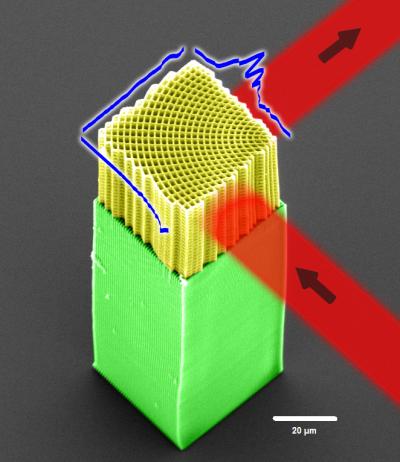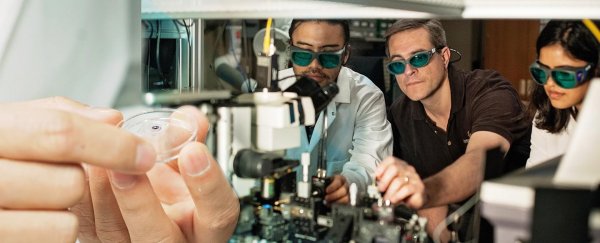Researchers have worked out how to control light beams around curves that are twice as tight as ever before, a crucial step that will help them build super-fast computers that send data on light beams, instead of electrical signals.
We already have materials capable of building these optical computers, but so far the process has been held up because we need devices that are able to control light beams around a computer without losing their energy. And now scientists from the University of Texas El Paso and the University of Central Florida in the US have created one.
The device, which looks sort of like a tiny plastic honeycomb, can turn beams of photons into optical wires that can bend around the tiny structures inside a computer.
 University of Central Florida
University of Central Florida
"Computer chips and circuit boards have metal wire connections within them that transport data signals," said Raymond Rumpf, one of the lead researchers, in a press release. "One of challenges when using light is figuring out a way to make tight bends so we can replace the metal wiring more effectively."
Right now, conventional light waveguides, such as optical fibres, can steer light across great distances and gradual turns, but if a curve is too steep, the light beams escape and energy is lost.
But the new device, which you can see above, is like a miniature lattice, and when light is beamed through it, the researchers found they could control beams through 90 degree bends that are twice as tight as has previously been possible - and all without any loss of the light beam's integrity or intensity.
The results, which have been published in Optics Express, set a new record in optics, but the team is now looking to double the tightness of the turns once again, so that they can beam light across tiny electronic circuit boards without any loss of energy or information.
Although there's still a lot of work to be done, if they can achieve that, we'll be on the verge of creating computers that are thousands of times faster than the ones we currently use. Just imagine the potential.
